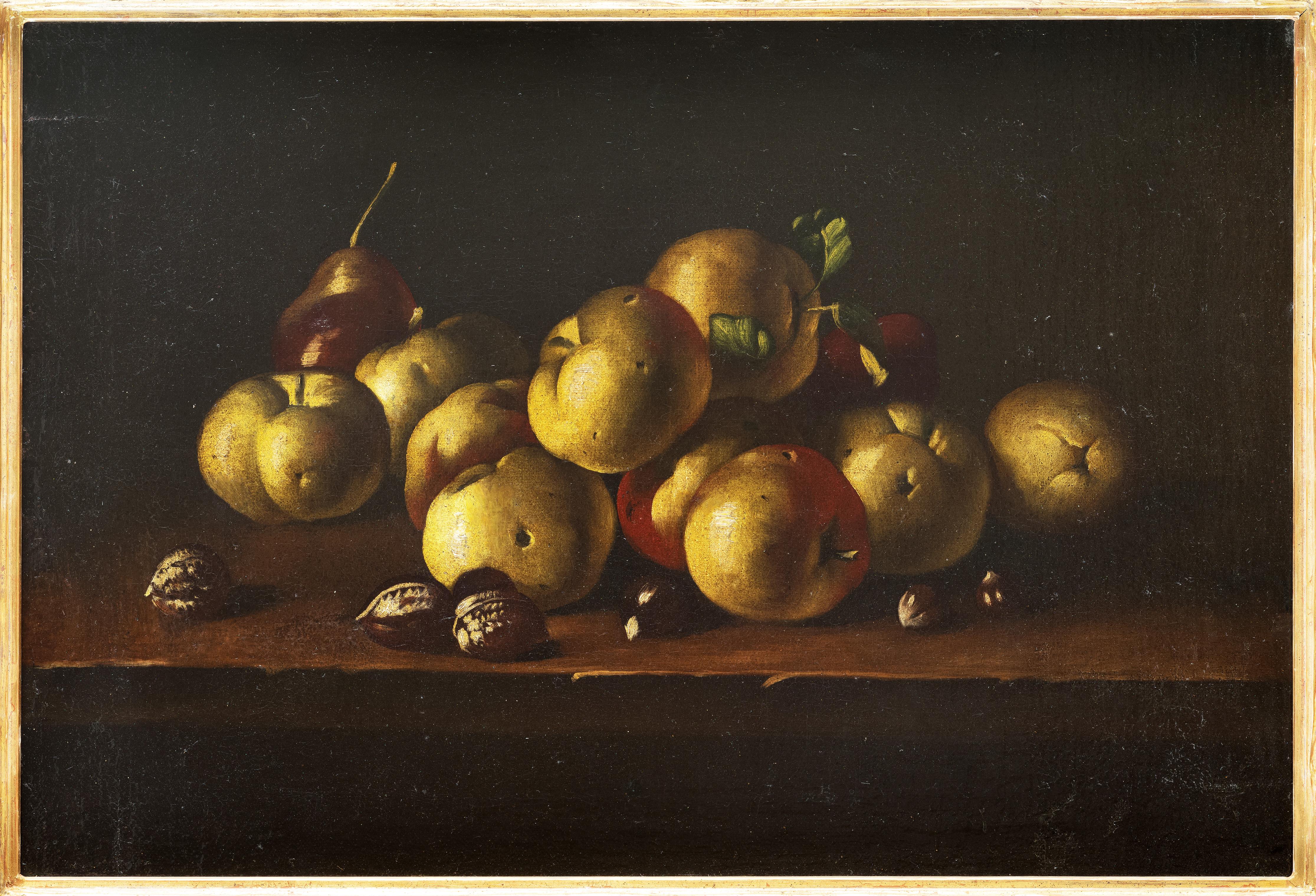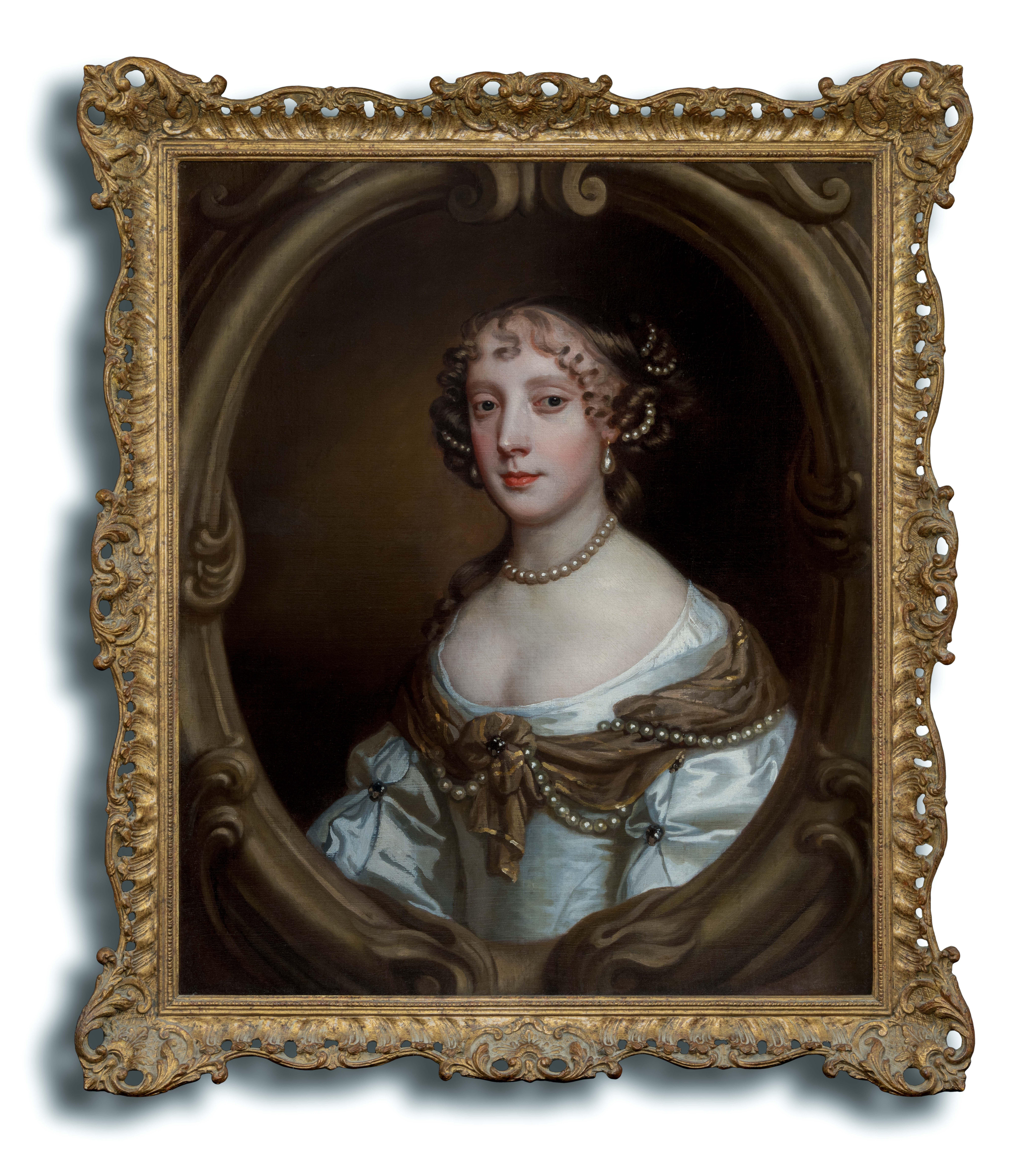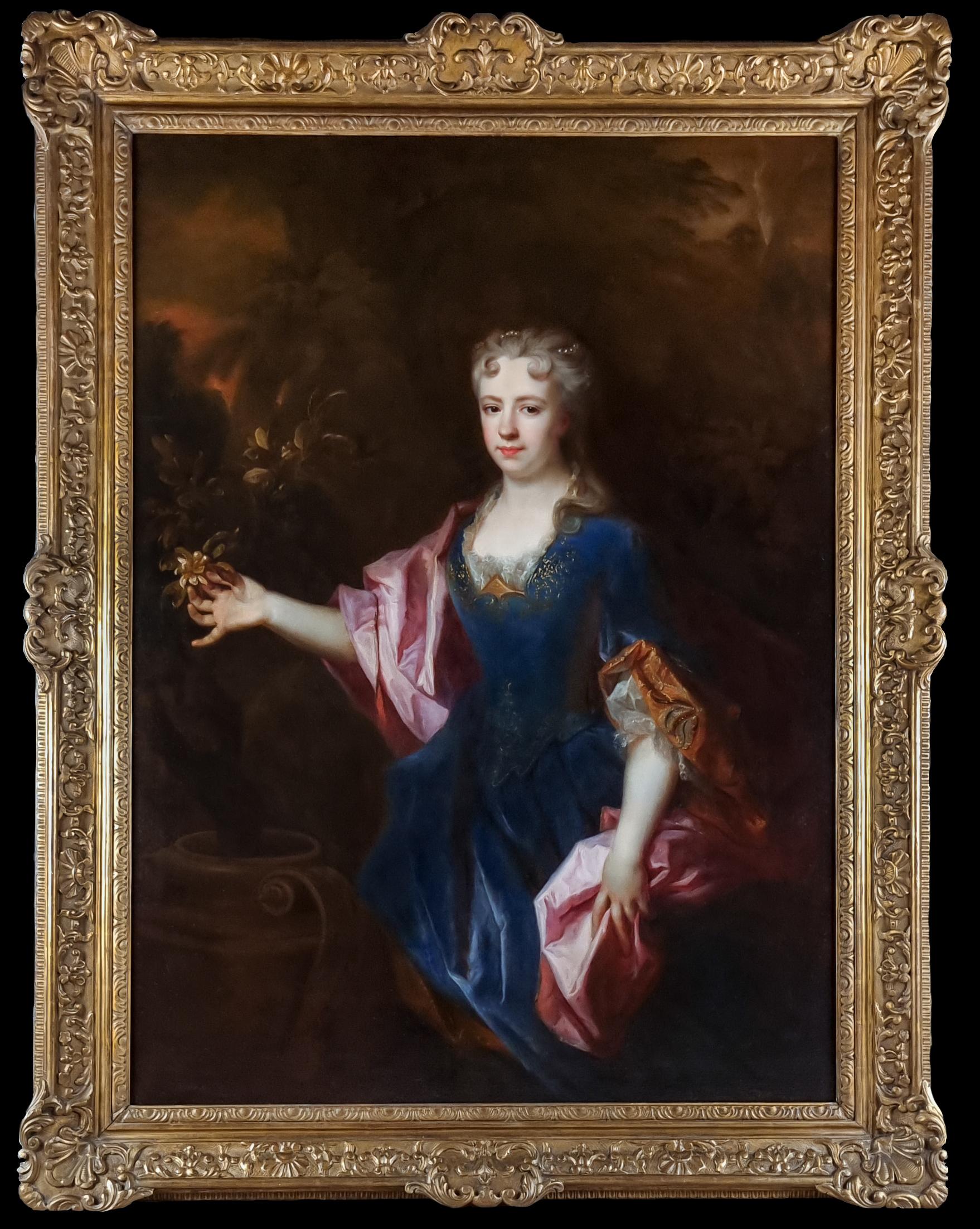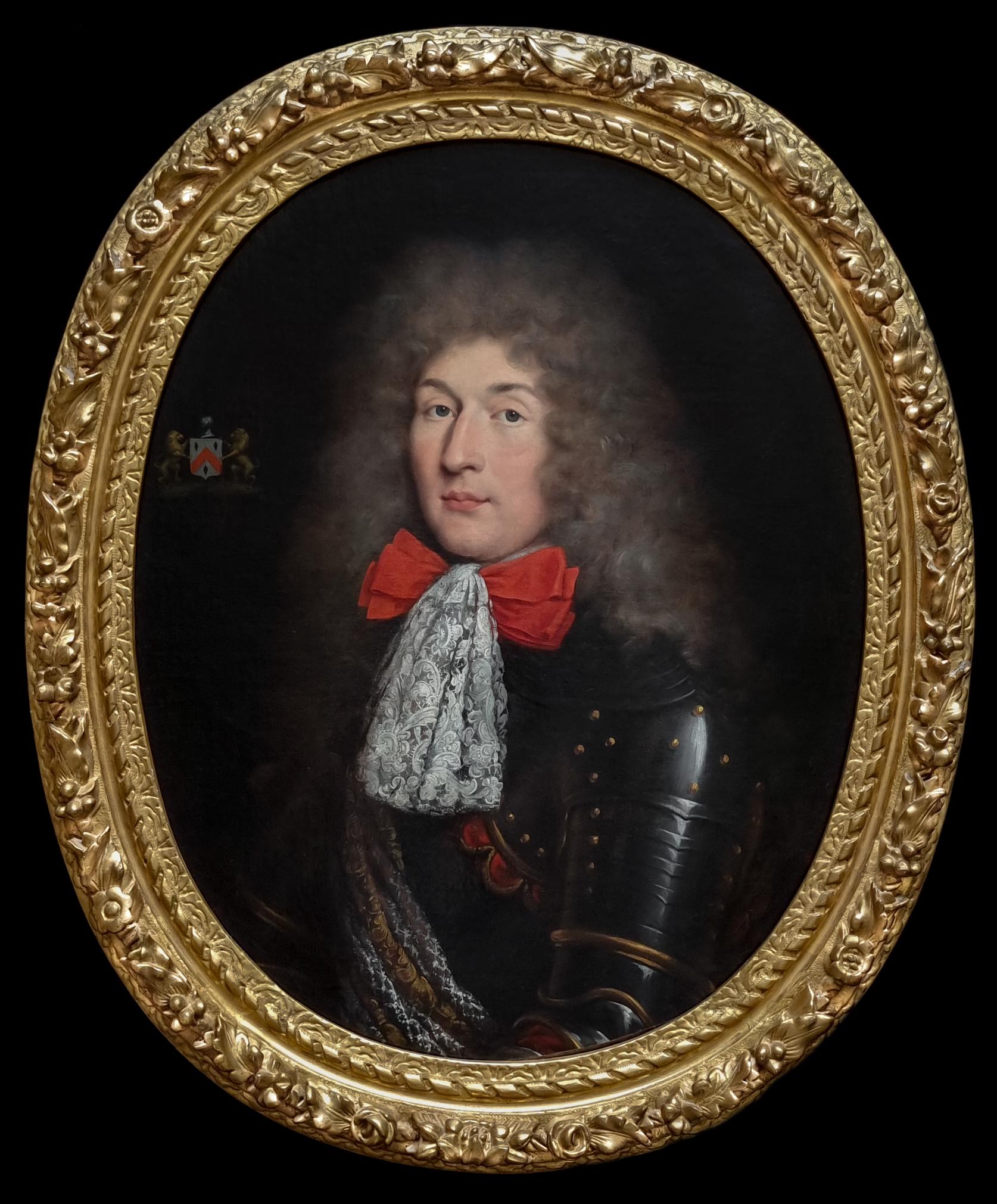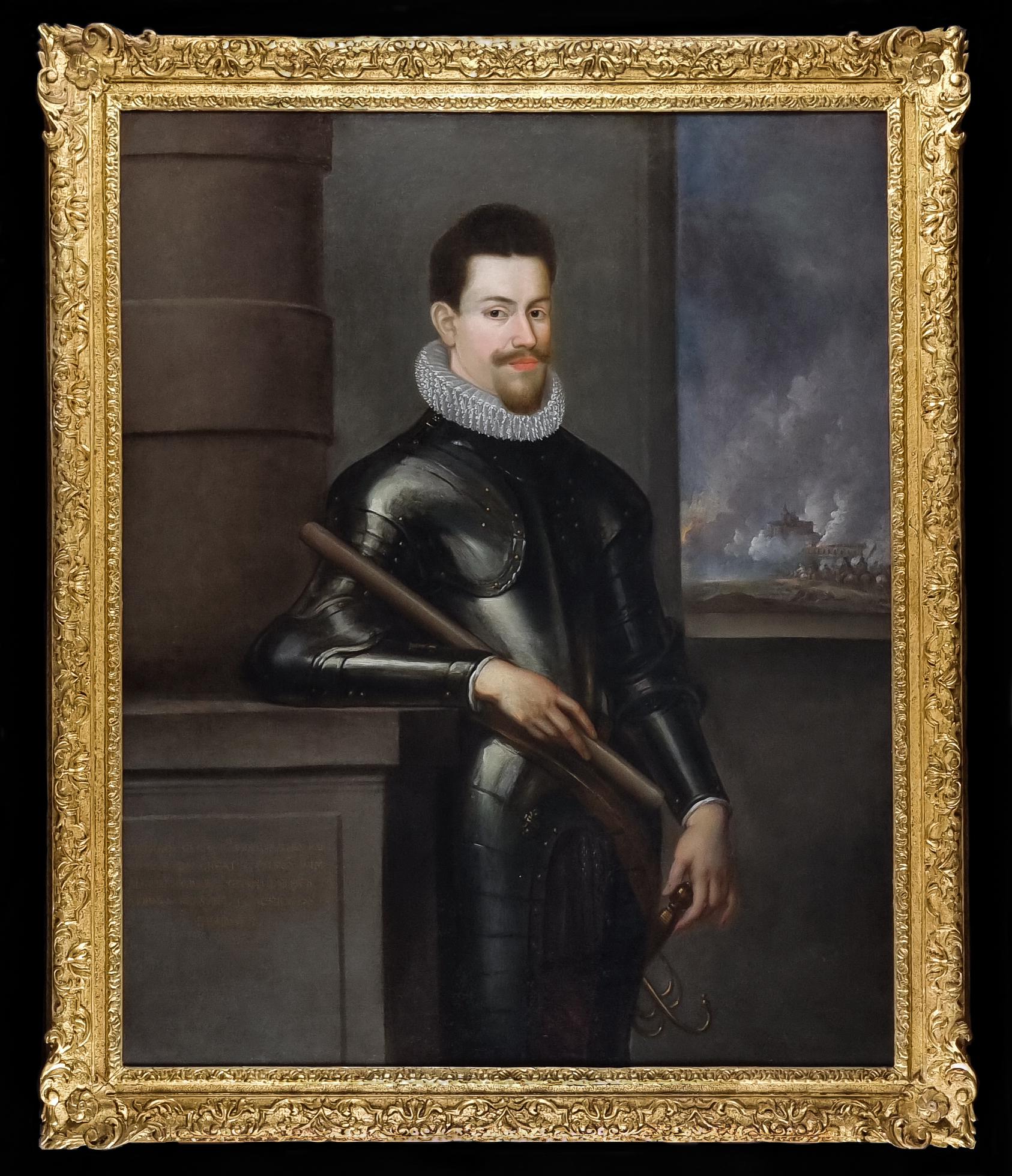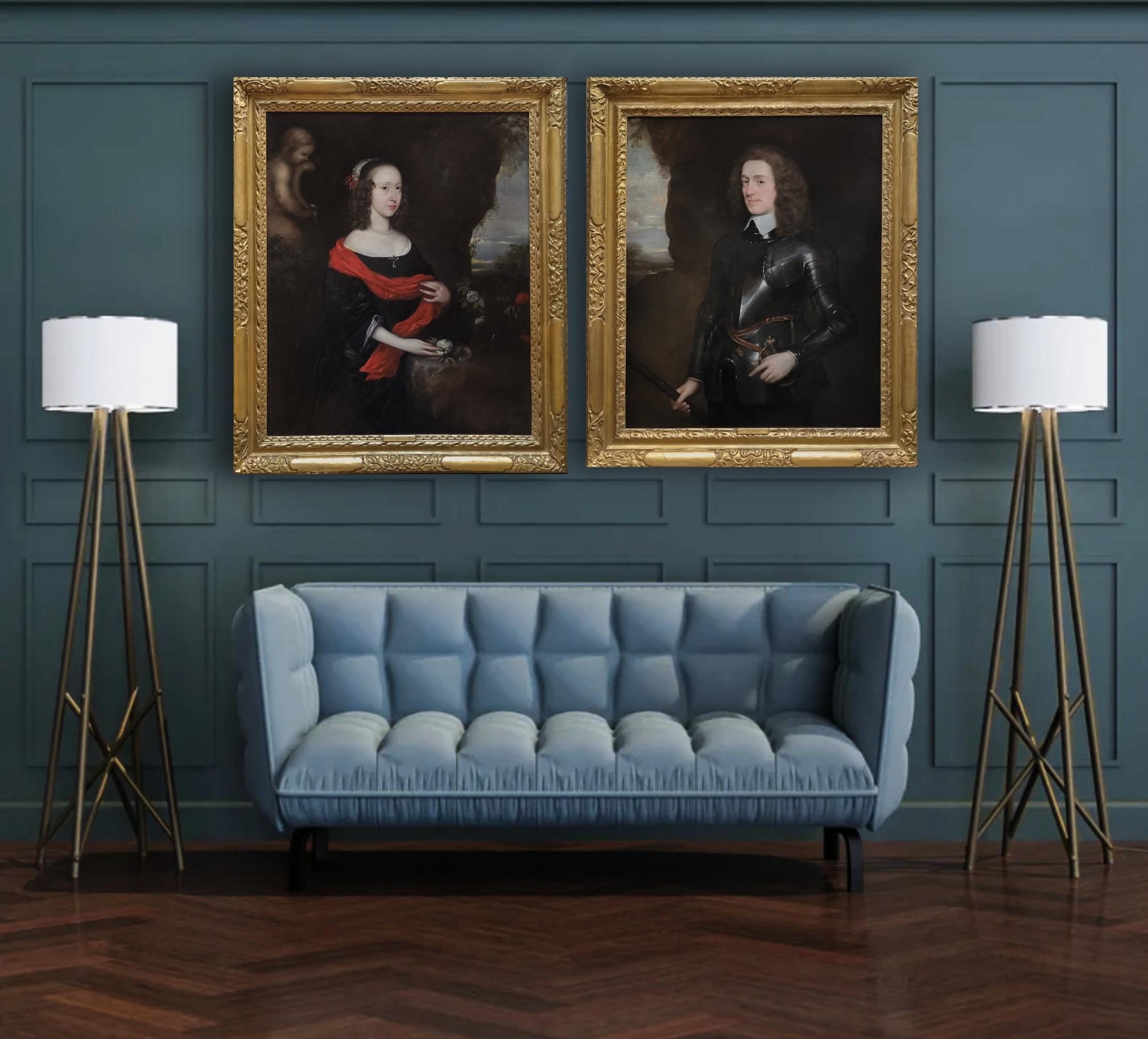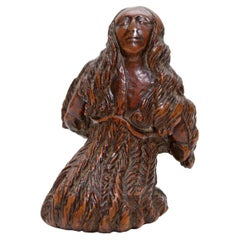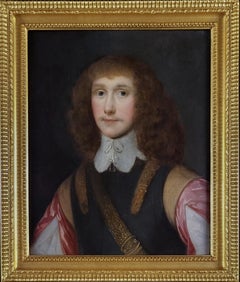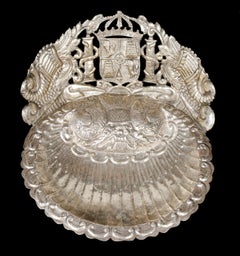
Spanish Colonial Silver Baptismal Dish
View Similar Items
Want more images or videos?
Request additional images or videos from the seller
1 of 6
UnknownSpanish Colonial Silver Baptismal Dish
About the Item
- Dimensions:Height: 9.5 in (24.13 cm)Width: 17.5 in (44.45 cm)
- Medium:
- Movement & Style:
- Period:
- Condition:
- Gallery Location:New York, NY
- Reference Number:1stDibs: LU1024578331

About the Seller
5.0
Recognized Seller
These prestigious sellers are industry leaders and represent the highest echelon for item quality and design.
Established in 1997
1stDibs seller since 2012
17 sales on 1stDibs
Typical response time: 11 hours
More From This SellerView All
- Cuzco School Baptismal DishBy Spanish Colonial (Peruvian)Located in New York, NYProvenance: Manuel Ortíz de Zevallos y García, Peru; and by descent in the family to: Private Collection, New York. This impressive baptismal dish is an example of eighteenth-cent...Category
18th Century Old Masters Sculptures
MaterialsSilver
- Allegory of AbundanceLocated in New York, NYPainted in collaboration with Hendrick van Balen (Antwerp, 1575 – 1632). Provenance: Private Collection, Uruguay, since the 1930s. The eldest son of Jan Br...Category
17th Century Old Masters Paintings
MaterialsCopper
- The Resurrection of ChristLocated in New York, NYProvenance: with “Mr. Scheer,” Vienna, by July 1918; where acquired by: Jindřich Waldes, Prague, 1918–1941; thence by descent to: Private Collection, New York Literature: Rudolf Kuchynka, “České obrazy tabulové ve Waldesově obrazárně,” Památky archeologické, vol. 31 (1919), pp. 62-64, fig. 5. Jaroslav Pešina, “K datování deskových obrazů ve Waldesově obrazárně,” Ročenka Kruhu pro Pěstování Dějin Umění: za rok (1934), pp. 131-137. Jaroslav Pešina, Pozdně gotické deskové malířství v Čechách, Prague, 1940, pp. 150-151, 220. Patrik Šimon, Jindřich Waldes: sběratel umění, Prague, 2001, pp. 166, 168, footnote 190. Ivo Hlobil, “Tři gotické obrazy ze sbírky Jindřicha Waldese,” Umění, vol. 52, no. 4 (2004), p. 369. Executed sometime in the 1380s or 1390s by a close associate of the Master of the Třeboň Altarpiece, this impressive panel is a rare work created at the royal court in Prague and a significant re-discovery for the corpus of early Bohemian painting. It has emerged from an American collection, descendants of the celebrated Czech industrialist and collector Jindřich Waldes, who died in Havana fleeing Nazi-occupied Europe. The distinctive visual tradition of the Bohemian school first began to take shape in the middle of the fourteenth century after Charles IV—King of Bohemia and later Holy Roman Emperor—established Prague as a major artistic center. The influx of foreign artists and the importation of significant works of art from across Europe had a profound influence on the development of a local pictorial style. Early Italian paintings, especially those by Sienese painters and Tommaso da Modena (who worked at Charles IV’s court), had a considerable impact on the first generation of Bohemian painters. Although this influence is still felt in the brilliant gold ground and the delicate tooling of the present work, the author of this painting appears to be responding more to the paintings of his predecessors in Prague than to foreign influences. This Resurrection of Christ employs a compositional format that was popular throughout the late medieval period but was particularly pervasive in Bohemian painting. Christ is shown sitting atop a pink marble sarcophagus, stepping down onto the ground with one bare foot. He blesses the viewer with his right hand, while in his left he holds a triumphal cross with a fluttering banner, symbolizing his victory over death. Several Roman soldiers doze at the base of the tomb, except for one grotesque figure, who, beginning to wake, shields his eyes from the light and looks on with a face of bewilderment as Christ emerges from his tomb. Christ is wrapped in a striking red robe with a blue interior lining, the colors of which vary subtly in the changing light. He stands out prominently against the gold backdrop, which is interrupted only by the abstractly rendered landscape and trees on either side of him. The soldiers’ armor is rendered in exacting detail, the cool gray of the metal contrasting with the earth tones of the outer garments. The sleeping soldier set within a jumble of armor with neither face nor hands exposed, is covered with what appears to be a shield emblazoned with two flies on a white field, somewhat resembling a cartouche (Fig. 1). This may be a heraldic device of the altarpiece’s patron or it may signify evil, referencing either the Roman soldiers or death, over both of which Christ triumphs. This painting formed part of the collection assembled by the Czech industrialist and founder of the Waldes Koh-i-noor Company, Jindřich Waldes, in the early twentieth century. As a collector he is best remembered for establishing the Waldes Museum in Prague to house his collection of buttons (totaling nearly 70,000 items), as well as for being the primary patron of the modernist painter František Kupka. Waldes was also an avid collector of older art, and he approached his collecting activity with the goal of creating an encyclopedic collection of Czech art from the medieval period through to the then-present day. At the conclusion of two decades of collecting, his inventory counted 2331 paintings and drawings, 4764 prints, and 162 sculptures. This collection, which constituted the Waldesova Obrazárna (Waldes Picture Gallery), was first displayed in Waldes’ home in Prague at 44 Americká Street and later at his newly built Villa Marie at 12 Koperníkova Street. This Resurrection of Christ retains its frame from the Waldes Picture Gallery, including its original plaque “173 / Česky malíř z konce 14 stol.” (“Czech painter from the end of the 14th century”) and Waldes’ collection label on the reverse. The Resurrection of Christ was one of the most significant late medieval panel...Category
15th Century and Earlier Old Masters Paintings
MaterialsTempera, Panel
- Job Cursed by His WifeBy Giovanni Battista LangettiLocated in New York, NYProvenance: Alfred (1883-1961) and Hermine Stiassni (1889-1962), Brno, Czech Republic, by 1925; thence London, 1938-1940; thence Los Angeles, 1940-1962; thence by descent to: Susanne Stiassni Martin and Leonard Martin, San Francisco, until 2005; thence by descent to: Private Collection, California Exhibited: Künstlerhaus, Brünn (Brno), 1925, as by Ribera. “Art of Collecting,” Flint Institute of Art, Flint, Michigan, 23 November 2018 – 6 January 2019. Literature: Alte Meister...Category
1670s Old Masters Paintings
MaterialsCanvas, Oil
- Portrait of a Lady with a ChiqueadorLocated in New York, NYProvenance: Torres Family Collection, Asunción, Paraguay, ca. 1967-2017 While the genre of portraiture flourished in the New World, very few examples of early Spanish colonial portraits have survived to the present day. This remarkable painting is a rare example of female portraiture, depicting a member of the highest echelons of society in Cuzco during the last quarter of the 17th century. Its most distinctive feature is the false beauty mark (called a chiqueador) that the sitter wears on her left temple. Chiqueadores served both a cosmetic and medicinal function. In addition to beautifying their wearers, these silk or velvet pouches often contained medicinal herbs thought to cure headaches. This painting depicts an unidentified lady from the Creole elite in Cuzco. Her formal posture and black costume are both typical of the established conventions of period portraiture and in line with the severe fashion of the Spanish court under the reign of Charles II, which remained current until the 18th century. She is shown in three-quarter profile, her long braids tied with soft pink bows and decorated with quatrefoil flowers, likely made of silver. Her facial features are idealized and rendered with great subtly, particularly in the rosy cheeks. While this portrait lacks the conventional coat of arms or cartouche that identifies the sitter, her high status is made clear by the wealth of jewels and luxury materials present in the painting. She is placed in an interior, set off against the red velvet curtain tied in the middle with a knot on her right, and the table covered with gold-trimmed red velvet cloth at the left. The sitter wears a four-tier pearl necklace with a knot in the center with matching three-tiered pearl bracelets and a cross-shaped earing with three increasingly large pearls. She also has several gold and silver rings on both hands—one holds a pair of silver gloves with red lining and the other is posed on a golden metal box, possibly a jewelry box. The materials of her costume are also of the highest quality, particularly the white lace trim of her wide neckline and circular cuffs. The historical moment in which this painting was produced was particularly rich in commissions of this kind. Following his arrival in Cuzco from Spain in the early 1670’s, bishop Manuel de Mollinedo y Angulo actively promoted the emergence of a distinctive regional school of painting in the city. Additionally, with the increase of wealth and economic prosperity in the New World, portraits quickly became a way for the growing elite class to celebrate their place in society and to preserve their memory. Portraits like this one would have been prominently displayed in a family’s home, perhaps in a dynastic portrait gallery. We are grateful to Professor Luis Eduardo Wuffarden for his assistance cataloguing this painting on the basis of high-resolution images. He has written that “the sober palette of the canvas, the quality of the pigments, the degree of aging, and the craquelure pattern on the painting layer confirm it to be an authentic and representative work of the Cuzco school of painting...Category
17th Century Old Masters Paintings
MaterialsCanvas, Oil
- Allegory of FortuneLocated in New York, NYProvenance: S. Spinelli Collection, Florence; their sale, Galleria Pesaro, Milan, July 11-14, 1928, lot 112 (unsold); reoffered Galleria Luigi Bellini, Florence, April 23-26, 1934, lot 132, as manner of Baldassare Peruzzi Dr. Giacomo Ancona, Florence, 1930s, and after 1939, San Francisco; thence by descent to his son: Mario Ancona, San Francisco; thence by descent to his children: Mario Ancona III and Victoria Ancona, San Francisco, until 1995; thence to: Phyllis Ancona Green, widow of Mario Ancona, Los Angeles (1995-2012) Literature: Donato Sanminiatelli, Domenico Beccafumi. Milan 1967, p. 170 (under paintings attributed to Beccafumi) Among the precious survivors of Renaissance secular paintings for domestic interiors are several unusual and particularly attractive panels painted in Siena at the end of the fifteenth and beginning of the sixteenth centuries. These paintings depict exemplary figures from antiquity—heroes or heroines, as well as allegorical, literary, and mythological figures. For the most part, these panels have survived in groups of three, although it is possible that some of these works were painted either as part of larger series or as individual projects. One such trio by Beccafumi consists of two paintings now at the National Gallery, London (Marcia and Tanaquil) and a third in the Galleria Doria-Pamphilj, Rome (Cornelia). These were commissioned around 1517–1519 for the bedroom of Francesco di Camillo Petrucci in Siena and were most likely placed together as elements in the wall decoration (spalliere) or installed above the back of a bench or cassapanca. Another, earlier (ca. 1495–1500), set of three—Guidoccio Cozzarelli’s Hippo, Camilla, and Lucretia (Private Collection, Siena) survives with its original wooden framework—a kind of secular triptych. Judith, Sophonisba, and Cleopatra in the collection of the Monte dei Paschi, Siena, are by an anonymous artist close to Beccafumi called the “Master of the Chigi-Saracini Heroines.” Girolamo di Benvenuto’s Cleopatra, Tuccia, and Portia are dispersed (homeless, Prague, Chambery), and Brescianino’s Faith, Hope, and Charity are in the Pinacoteca Nazionale in Siena. The present painting first appeared in the Spinelli sale in Florence in 1934, at which time it was sold with two panels of identical size and format. Each was catalogued as being by the “manner of Baldassare Peruzzi” and of unidentified subject. Of these, the painting depicting a male figure turned to the right has recently reappeared in a private Italian collection, while the location of the third work, portraying a cloaked figure turned three-quarters left, remains unknown. Our panel depicts the allegorical figure of Fortune. Here she is represented in typical fashion as a nude female figure balanced on a wheel (sometimes called the Rota Fortunae), her billowing drapery indicating that she is as changeable as the wind. The appearance of the Virgin and Child in the cloud at the upper right is an unusual addition to the iconography. The subjects of the two pendant male...Category
16th Century Old Masters Paintings
MaterialsOil, Panel
You May Also Like
- 17th Century Flemish Sculpture of a Religious FigureLocated in Rochester, NYAntique carving of a saint or martyr. 17th century Flemish hardwood carving. Wonderful wear and rich color.Category
17th Century Old Masters Figurative Sculptures
MaterialsWood
- Portrait of Gentleman, Thomas Bruce, Earl of Elgin c.1638 Manor House ProvenanceLocated in London, GBTitan Fine Art present this picture which formed part of a historic collection of an English aristocratic family, Lord and Lady Sandys at their magnificent baroque and Regency Grade-...Category
17th Century Old Masters Portrait Paintings
MaterialsOil, Wood Panel
- Portrait of a Lady Diana Cecil, Countess of Elgin c.1638, Manor House ProvenanceLocated in London, GBTitan Fine Art present this picture which formed part of a historic collection of an English aristocratic family, Lord and Lady Sandys at their magnificent baroque and Regency Grade-...Category
17th Century Old Masters Portrait Paintings
MaterialsOil, Wood Panel
- Still Life with Apples and Nuts, 17th Century, Old Master, Spanish PaintingLocated in Greven, DEJuan Sánchez Cotán (1560 - 1627) was one of the most important still life painters in Spain and beyond. He developed a certain type of still life with a ...Category
17th Century Old Masters Still-life Paintings
MaterialsCanvas, Oil
$7,476 Sale Price20% Off - Portrait of a Lady in an Elaborate Stone Cartouche, Oil on canvas PaintingBy Mary BealeLocated in London, GBPortrait of a Lady in an Elaborate Stone Cartouche c.1675-80 Mary Beale (1632-1699) Titan Fine Art present this superb portrait where the sitter has been portrayed wearing a low-cut white chemise under a gold silk robe with a draped light...Category
17th Century Old Masters Portrait Paintings
MaterialsCanvas, Oil
- Portrait of a Lady, Marie-Madeleine de Chamillart, Oil on Canvas PaintingLocated in London, GBThis work formed part of the collection of paintings and family heirlooms of Baron Hugues Alfred Frèdéric de Cabrol de Moute (1909-1997) and his wife, Baroness Marguerite (née d’Harcourt) de Cabrol de Moute (1915-2011). The couple had unimpeachable and enviable family backgrounds, and were descendants of ancient princelings; together they were one of the most prominent high-society couples of the twentieth century and counted the Duke of Duchess of Windsor amongst their closest friends. This portrait is that of Marie-Madeleine de Chamillart (died 28 May 1751) nee Nicolas de Lusse. She had a daughter, Anne, in 1692. In 1700 she married Clément Chamillart (1663-1708), President of the Accounts of the King's Chamber. The couple had a daughter, Madeleine (born 1701), who married Louis, the only son of Guillaume de Guitaut and Antoinette de Vertamont in 1719. Guillaume de Guitaut resided at Château d'Époisses in Burgundy France and his descendants still live today. A portrait of our sitter is still held at the Château. Clément Chamillart died in 1708 and our sitter remarried Jean-Baptiste de Johanne de la Carre (1678-1726), marquis de Saumery, maréchal de camp, in 1713. This marriage produced two daughters, Marguerite (died 1729) and Marie Madeleine (born 1720). Much of the beauty of this elegant portrait resides in its graceful composition – it is a fine example of French portraiture. Beautifully and meticulously rendered throughout, the sitter has been depicted three quarter length in an outdoor setting beside a potted orange tree. The lady is shown in a blue dress with silver detailed décolletage and large voluminous sleeves turned over to reveal elaborately detailed lining. The sumptuous fabrics convey a sense of wealth and prestige. The portrait is striking in its portrayal of the sumptuous fabrics and their decorative richness. The prominent sprig of orange blossom that she is holding is a traditional representation of marriage and eternal love in art, but it also alludes to youth and freshness, and by virtue of the great expense and difficulty with which it was often grown, to great wealth. In accordance with the sitter's age and the style of clothing and hair with the curls on the forehead, this portrait can be dated to the 1720s. Baron Hugues Alfred Frèdéric de Cabrol de Moute (1909-1997) was the son of Roger de Cabrol de Moute and Helen Mary de Lassence. He was one of the more engaging personages in that delightful social constellation of social figures who animated what has become known as "Cafe Society" which was international but inevitably most at home in Paris from the 1920's until the 1960's. He married Marguerite d'Harcourt (1915-2011), known as Daisy, in Paris in 1937, the only daughter of Étienne, Marquis d'Harcourt, and his wife, Marie de Curel. The Harcourt family belongs to the circle of the oldest families in France; the founder of the family, Bernard le Danois, received the seigniory of Harcourt in the tenth century, following the conquest of Normandy. In the 11th century, his descendants took part in the conquest of England alongside William the Conqueror. Later, the Harcourt family was divided into a French branch and an English branch, which successively received the titles of barons, viscounts, and counts. Marguerite "Daisy" Marie Brigitte Emmanuelle Ghislaine d'Harcourt, Baronne de Cabrol was one of the last survivors of twentieth century French high society. Through her mother, Daisy was a descendant of the great industrial family of Wendel, with iron and steel enterprises in Lorraine; she also descended from Nicolas Soult, one of Napoleon's Marshals and three times Prime Minister of France. The couple became friends of the Duke and Duchess of Windsor in 1947, and were invited to the Chateau de la Croë, their rented house on Cap d'Antibes. There they found the exiled Windsors living in unusual post-war luxury, serving delicious food and providing fresh sheets every day. Daisy suspected that the Windsors were bored, but, having nothing else to do, were condemned to an endless round of social engagements. She and Fred were among the few allowed to see the Duchess laid out after her death in 1986. Daisy was a considerable hostess, giving a ball every year for her charity, L'Essor, to which le tout Paris would come. One of these, in 1954, was at the Palais des Glaces, in Paris (later used in the film Gigi), at which she entertained Charlie Chaplin, the Begum Aga Khan and the Windsors. According to Nancy Mitford...Category
18th Century Old Masters Portrait Paintings
MaterialsCanvas, Oil
Recently Viewed
View AllMore Ways To Browse
Spanish Colonial School
Cuzco School
Cuzco Art
Antique Style Fonts
V Miller
Peru Religious Art
Ed Miller
Antique Peruvian Silver
American 1700 Furniture
Antique Double Basin
Scallop Basin
Double V Gallery
Old Colonial Silver
Colonial Latin American
Imperial Crest
Spanish Colonial 18th C Furniture
18th C American Colonial
Indigenous Feathers




